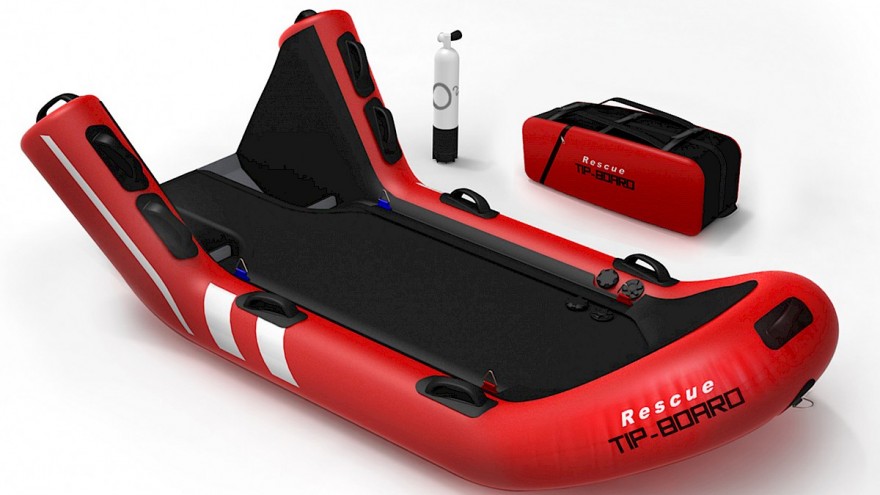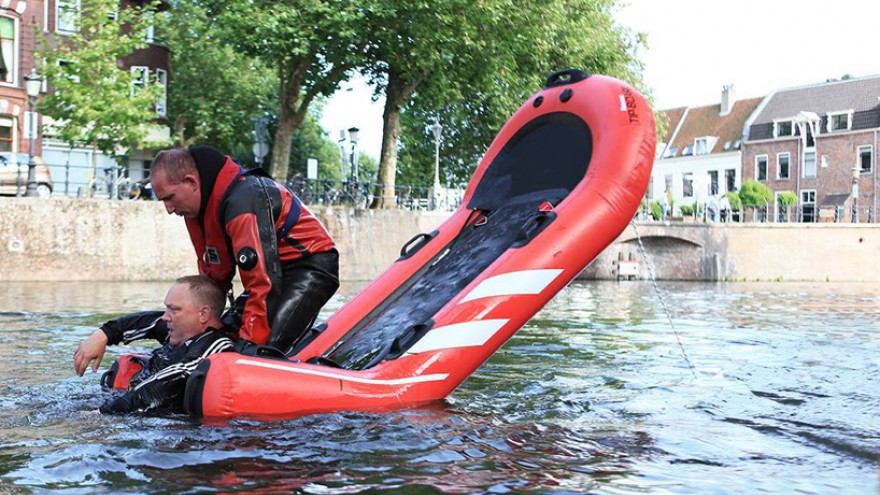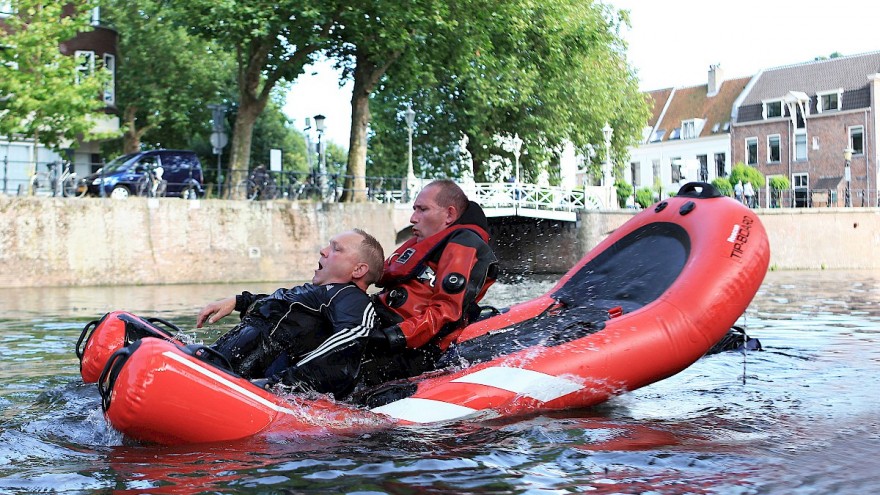When a group of Dutch emergency service providers needed a safer life-raft for firemen to use when rescuing drowning victims up to 200 metres from shore, they put design agency Spark Design and Innovation to the task. The 20-year-old Rotterdam-based agency have tackled a broad spectrum of safety equipment, including cycle helmets, emergency hydraulic mini-cutters and a car safety hammer.
Spark had also previously collaborated on the concept design for the mbrace rescue vehicle, a mobilisation tool for the Urban Search and Rescue team in the Netherlands to respond to natural disasters on hazardous terrain.
The Rescue Tip-Board, created for the Haaglanden Safety Region, is a revolutionary new inflatable life-raft design that enables rescue workers to reach a drowning person faster and offer help more effectively.
In their initial research of existing rescue equipment and in workshops with the Haaglanden Fire Service, they determined that traditional inflatable rescue boats are bulky and heavy, making them difficult to deploy. Most crucially, they require significant effort to get the emergency victim out of the water and onto the craft, a process that can also be dangerous for the rescuer as well. All of these factors contribute to slowing down an extremely time-sensitive process, which can result in loss of life.
The Spark designers introduced many innovations to the overall rescue process, such as a coupled compressed air tank that inflates the raft rapidly and a collapsible design that can fold down to fit in a conveniently small carry bag.
The biggest changes, however, are to the shape of the life raft itself and the tilting mechanism that gives this product its name. In a conventional inflatable rescue craft, emergency workers must balance extremely carefully when pulling a person on board, otherwise they could be put in jeopardy by falling out themselves or capsizing. So the designers altered the raft’s profile, creating a front section that rises up out of the water, functioning as a counter-balance for the additional weight of the emergency victim. Once the victim has been firmly grasped, the rescuer can lean back and use this momentum to easily slide them safely onboard.
The Rescue Tip-Board won in the product category at this year’s Dutch Design Awards, whose jury commended the product’s co-development with all the stakeholders “thereby making it a special cooperation instead of a standard commissioning situation”. It has undergone extensive tests by safety experts, and is now on its way to being used in the field.










